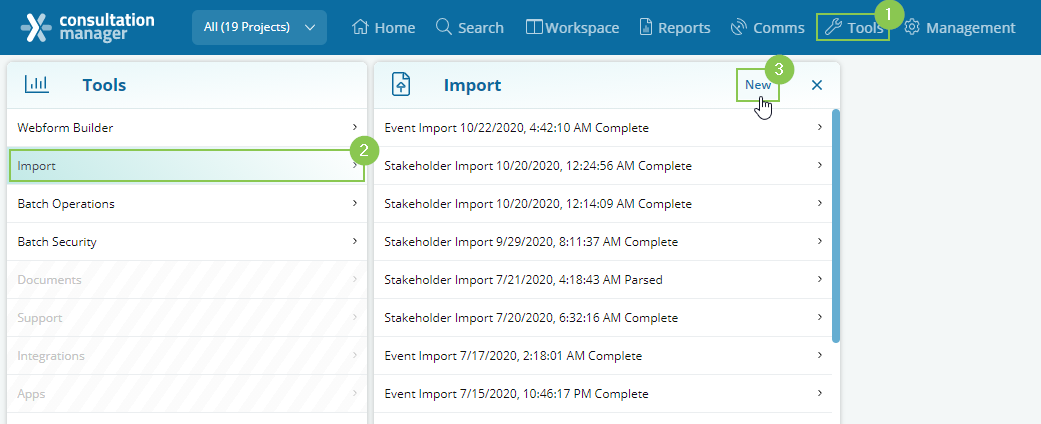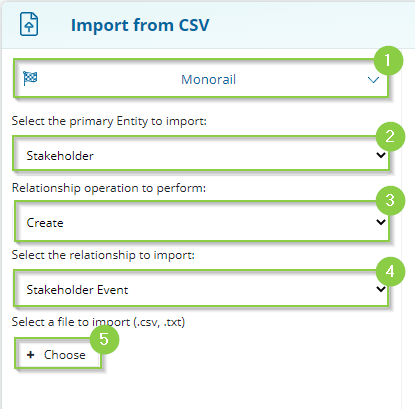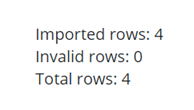Legacy feature - How do I bulk import two different record types and relate them together?
This article shows how to import two different types of data (e.g. Stakeholders and Events) and relate them together.
Required Minimum System Role: Standard User
Required Minimum Team Role: Team Leader
Accessing Legacy Importer
Navigate to Tools -> Import from the top bar.
Then at top right click the 'Legacy Importer' button.

Importing two different Entity types and relating them.
Using our dynamic import tool, Enterprise Administrators and Team Leaders can import bulk data directly from a .csv file into your Consultation Manager database.
This type of import will create two records per row of your .csv file.
To prepare your .csv spreadsheet for import, you should create one row per two records that need to be linked together. The below example shows Stakeholder data (1) and Event data (2) that correlate to that Stakeholder.

Once you have prepared your spreadsheet, navigate to Tools (1) > Import (2) and click New (3).

This will open a new blade at the right. Once you're in the importer tool, select:
1. Project or Projects to associate your imported Records with
2. Record type you are importing - this will be the first type of the new Records (the primary record type)
3. Relationship operation: Create
4. Relevant relationship - this should include the primary Record type and the type of Record you are linking to (the secondary record type)
After making the above selections, click Choose to upload your .csv (5)

This will ‘parse’ the data in the spreadsheet to the right-hand side of the screen where you can map the columns to the fields on the entity you’re importing. At the top of each column will be a drop-down selector with all the fields you can select to import the data into.
The drop-down selector will have the primary record fields at the top of the list, with the secondary record fields below that.

If there is a column in your .csv you do not wish to import, simply leave the selection as ‘Do Not include’.
Once you have mapped your columns to the corresponding fields, click ‘Save & Execute’ to run your import.

Once your import has been completed, it will let you know how many rows have successfully been imported.

If you’re importing a large amount of data, you can navigate away from the importer page, and it will continue to run as you perform other tasks. You will get an email when the import has successfully finished